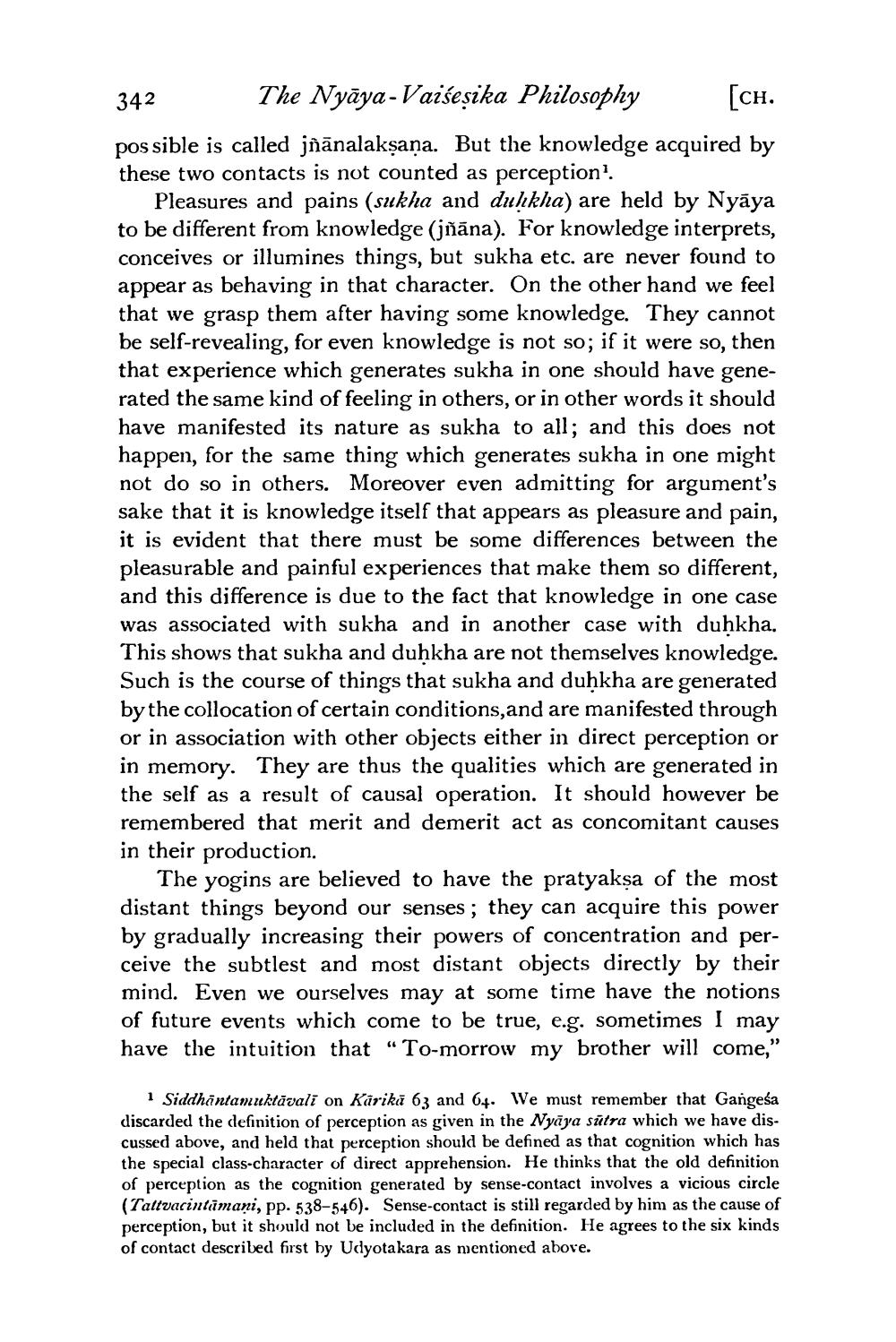________________
342
The Nyāya-Vaiseșika Philosophy
[ch.
possible is called jñānalaksana. But the knowledge acquired by these two contacts is not counted as perception!
Pleasures and pains (sukha and duhkha) are held by Nyāya to be different from knowledge (jñāna). For knowledge interprets, conceives or illumines things, but sukha etc. are never found to appear as behaving in that character. On the other hand we feel that we grasp them after having some knowledge. They cannot be self-revealing, for even knowledge is not so; if it were so, then that experience which generates sukha in one should have generated the same kind of feeling in others, or in other words it should have manifested its nature as sukha to all; and this does not happen, for the same thing which generates sukha in one might not do so in others. Moreover even admitting for argument's sake that it is knowledge itself that appears as pleasure and pain, it is evident that there must be some differences between the pleasurable and painful experiences that make them so different, and this difference is due to the fact that knowledge in one case was associated with sukha and in another case with duhkha. This shows that sukha and duḥkha are not themselves knowledge. Such is the course of things that sukha and duḥkha are generated by the collocation of certain conditions, and are manifested through or in association with other objects either in direct perception or in memory. They are thus the qualities which are generated in the self as a result of causal operation. It should however be remembered that merit and demerit act as concomitant causes in their production.
The yogins are believed to have the pratyaksa of the most distant things beyond our senses; they can acquire this power by gradually increasing their powers of concentration and perceive the subtlest and most distant objects directly by their mind. Even we ourselves may at some time have the notions of future events which come to be true, e.g. sometimes I may have the intuition that “To-morrow my brother will come,”
1 Siddhantamuktavali on Kārika 63 and 64. We must remember that Gangesa discarded the definition of perception as given in the Nyāya sūtra which we have discussed above, and held that perception should be defined as that cognition which has the special class-character of direct apprehension. He thinks that the old definition of perception as the cognition generated by sense-contact involves a vicious circle (Tattvacintimani, pp. 538-546). Sense-contact is still regarded by him as the cause of perception, but it should not be included in the definition. He agrees to the six kinds of contact described first by Udyota kara as mentioned above.




